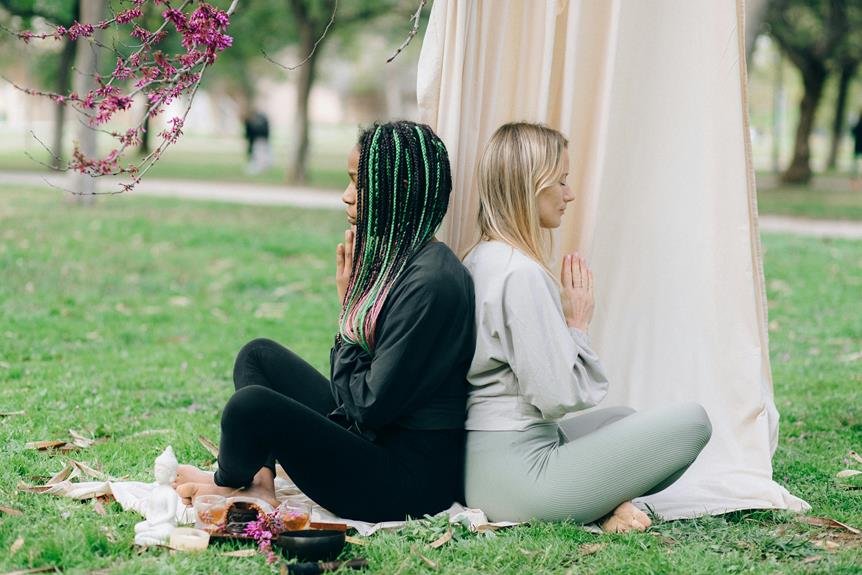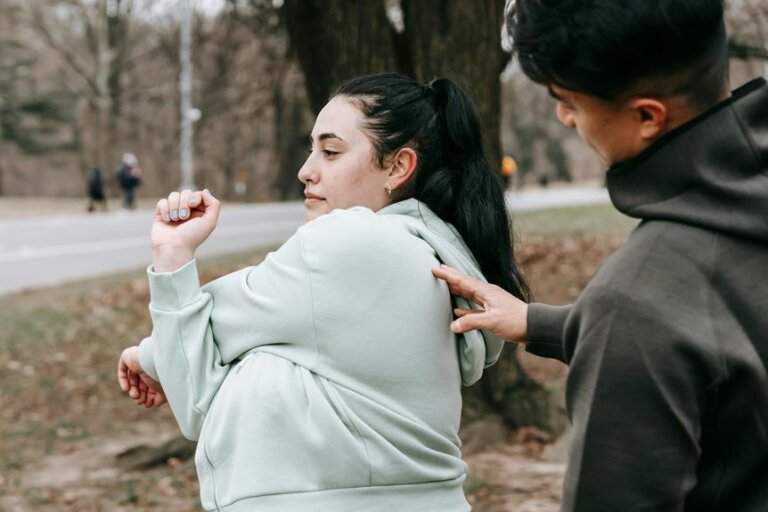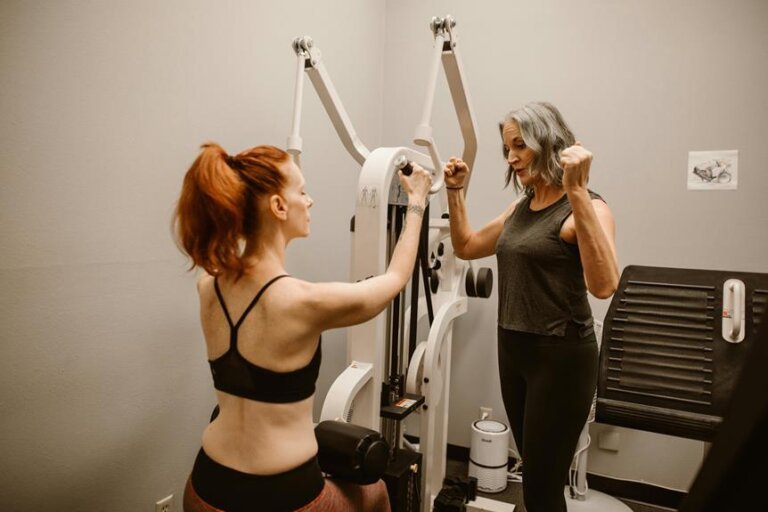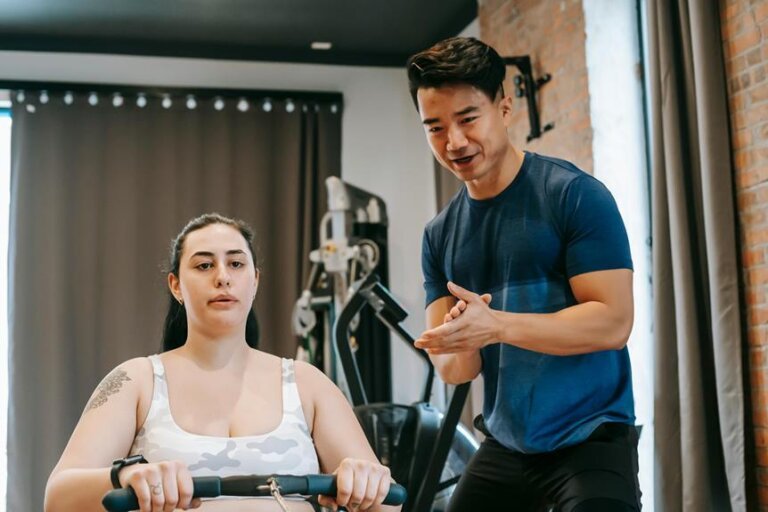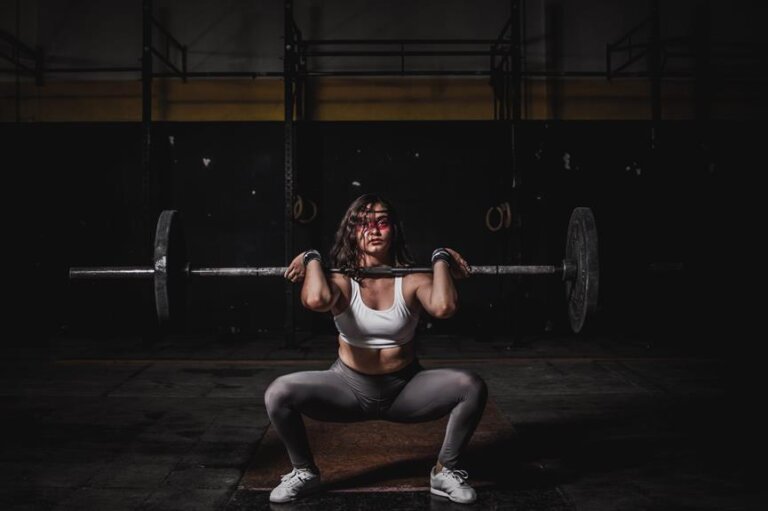8 Yoga Poses Every Woman Should Incorporate Into Her Routine
Ever wondered how to boost your overall wellbeing with a simple daily routine? You're in the right spot.
Incorporating just eight yoga poses into your daily routine can offer numerous benefits from stress relief to improved flexibility.
Let's explore the power of these moves, from the Mountain Pose to the Pigeon Pose, and how you can seamlessly integrate them into your lifestyle.
Ready to embark on this enlightening journey?
The Power of Mountain Pose
While you may not feel like you're doing much in Mountain Pose, this foundational yoga pose is actually working wonders on your body and mind. It's deceptively simple, yet it's a powerhouse of benefits. It's an important starting point for any yoga routine, and it's designed to bring you into a state of harmony and balance.
You might wonder how standing still could be so powerful. But that's the beauty of Mountain Pose. As you stand tall, you're aligning your body, strengthening your legs, and grounding yourself. This pose requires you to engage your muscles, promoting better posture and helping to prevent back pain. It's not just the physical benefits, though.
Mountain Pose also works on your mind. It encourages mindfulness and awareness of your body. As you focus on your breathing and the sensation of your feet on the ground, you're developing concentration and calming your mind. It's a moment of peace in your busy day, a chance to reconnect with yourself. So next time you're in Mountain Pose, don't underestimate it. It's not just standing – it's a powerful tool for physical and mental wellbeing.
Benefits of Downward Dog
Let's talk about the benefits of the Downward Dog pose.
This pose is a powerhouse for improving flexibility and strength.
Not only that, it's a proven stress and anxiety reducer.
Improving Flexibility and Strength
Downward Dog, a classic yoga pose, can significantly enhance your flexibility and strength. This pose requires you to lift your body into an inverted 'V' shape, which stretches your hamstrings, calves, and spine while strengthening your arms, shoulders, and legs. You'll notice a difference in your body's overall flexibility and strength with regular practice.
It's a great way to tone muscles and improve posture. Plus, it helps to prepare your body for more challenging poses in your yoga journey. Remember, it's not about perfection, but progression. So, don't fret if you can't get it right initially. With time, you'll improve and start reaping the benefits.
Include Downward Dog in your routine and embrace a stronger, more flexible you.
Reducing Stress and Anxiety
Beyond enhancing your physical strength and flexibility, practicing Downward Dog can also be a potent tool to alleviate stress and anxiety. It's not just about the physicality; it's the mental relaxation you'll experience.
As you hold this pose, you're encouraging full-body circulation, calming your mind, and creating a sense of peace. This inverted pose allows fresh oxygen to flow directly to your brain, which reduces feelings of stress and anxiety. It's almost like a natural tranquilizer for your system.
Moreover, it promotes a focused mind, helping you to disconnect from any chaos or worries. So, the next time you're feeling stressed, don't reach for the wine bottle, reach for your yoga mat. Incorporating Downward Dog into your routine may help you handle life's ups and downs more gracefully.
The Healing Warrior II Pose
Immerse yourself in the Healing Warrior II Pose, a yoga position that can foster physical strength and emotional resilience. This pose isn't just about physical prowess, it's a practice of inner strength, courage, and tranquility.
To perform this pose, stand tall and step your feet wide apart. Turn your right foot out and your left foot inward at a slight angle. Raise your arms parallel to the floor and reach them actively out to the sides, shoulder blades wide, palms down. Bend your right knee over the right ankle, so that the shin is perpendicular to the floor. You'll feel a powerful stretch along your left leg, your torso upright.
Warrior II is known for its healing benefits. It can enhance your stamina, breathing, and concentration. It's fantastic for stretching your hips, legs, and chest while also strengthening your shoulders, thighs, and the muscles around your knee. It's a pose that invites you to tap into your inner warrior, to find resilience and inner strength in the midst of challenge. Make it a regular part of your yoga routine and feel the transformation.
Embracing the Tree Pose
Next, let's delve into the Tree Pose, a balancing asana that'll challenge your stability while enhancing your focus and calm. This pose, also known as Vrksasana, mimics the grace and steadiness of a tree.
You'll start by standing tall, feet hip-width apart. Shift your weight to your left foot, and slowly bend your right knee. Rest your right foot against the inside of your left thigh, toes pointed down. If you're having trouble balancing, you can place your foot against your calf instead, but avoid resting it on your knee. Reach your arms skyward, hands together in a prayer position.
Hold the pose for 30 seconds, remembering to breathe deeply. You'll feel your body grounding, your muscles engaging, and your mind focusing. After all, the Tree Pose isn't just a workout for your body, but also a mental exercise. It teaches you patience, resilience, and the ability to find balance in life's chaos. Don't worry if you wobble or lose balance, it's all part of the journey.
Switch sides and repeat the pose. Consistent practice of the Tree Pose will improve your balance, strengthen your legs, and instill a sense of peace. Embrace this pose, and let it nourish your mind, body, and soul.
Child's Pose for Stress Relief
After mastering the Tree Pose, you might find the Child's Pose, or Balasana, a comforting follow-up, particularly when you're looking to alleviate stress. This simple yet effective pose serves as a gentle stretch for your hips, thighs, and ankles while also calming your brain and helping to relieve fatigue and anxiety.
Getting into Child's Pose is easy. Begin on your hands and knees and then sit back on your heels, spreading your knees as wide as your hips. Extend your arms in front of you and rest your forehead on the ground. Breathe deeply and let your body melt into the floor. Feel the tension release from your back, shoulders, and neck.
Incorporating Child's Pose into your routine, even for just a few minutes a day, can help manage stress levels. This pose promotes relaxation and introspection, allowing you to reconnect with your body and mind. By reducing physical tension and quieting your mind, you're better equipped to handle the stresses of daily life. So, whenever you're feeling overwhelmed, remember to take a moment for Balasana. It's the perfect pose for stress relief.
Savasana for Deep Relaxation
You've likely heard of Savasana, the final pose in most yoga classes.
It's more than just lying on the floor; it's a chance for deep relaxation.
Let's explore how to do it correctly, its many benefits, and how you can incorporate it into your daily routine.
Savasana's Relaxation Benefits
Diving into the world of deep relaxation, Savasana, often the final pose in a yoga sequence, offers significant benefits for both your mind and body. This seemingly simple pose helps to reduce stress, anxiety, and fatigue. You'll find it's an excellent way to promote sleep, and it's often used as a means to manage insomnia.
Savasana also aids in lowering blood pressure and calming the nervous system. You may notice an improvement in concentration and memory over time as well. But it's not just physical. Savasana helps you connect with your inner self, fostering a sense of peace and emotional balance.
It's an essential pose in your yoga routine, as it allows you to reap the full benefits of your practice.
Correct Savasana Pose Technique
To truly experience the deep relaxation Savasana offers, it's crucial you learn the correct technique for this pose. Start by lying down on your back. Let your legs fall open naturally and place your arms at your sides, palms facing upwards.
It's important to maintain a natural alignment, so check that your head, neck, and spine form a straight line. Close your eyes and take deep, slow breaths. As you breathe, consciously relax each part of your body, starting from your toes and moving up to your head. Let all tension melt away.
Incorporating Savasana Daily
After mastering the Savasana pose technique, it's essential to weave this calming exercise into your daily routine for profound relaxation. Savasana, often known as the 'corpse pose', lets you tap into a deep state of rest. It's more than just lying on your back; it's about releasing tension and surrendering to the earth.
Consider fitting Savasana into your schedule, either when you wake up or before bed. A mere 10-15 minutes will do the trick. Find a quiet space, lay on your back, arms by your side, and close your eyes. Focus on your breath, letting thoughts come and go. Don't judge or engage; just observe. This daily practice will help you cultivate mindfulness, reduce stress, and enhance overall well-being.
Balancing With the Crow Pose
Balancing on your hands in the Crow Pose, you'll engage your core and improve your concentration. It's a powerful pose that'll strengthen your forearms, wrists, and abdominal muscles. As you balance your knees on your triceps, you'll challenge your physical and mental boundaries.
To get into the Crow Pose, crouch down and place your hands flat on the floor. Spread your fingers wide for better balance. Bend your elbows slightly and lean forward, placing your knees on your upper arms. Gently lift one foot off the ground, then the other. Aim to balance your body on your hands.
It's important to remember that it's okay if you can't master the Crow Pose immediately. It's a challenging pose and it'll take practice and patience. But don't be disheartened. Each time you try, you're building strength and improving your balance.
Incorporating the Crow Pose into your routine isn't just about physical strength, it's about mental strength too. It'll boost your confidence and help you overcome fear. After all, yoga isn't just about flexibility and fitness, it's also about mental fortitude. It's the perfect pose to test your limits and stretch your capabilities.
Enhancing Flexibility With Pigeon Pose
While the Crow Pose challenges your balance and strength, the Pigeon Pose aims to enhance your flexibility, particularly in the hips and thighs. This pose, beloved by athletes and casual yogis alike, can do wonders for your body when practiced regularly.
To get into Pigeon Pose, start in Downward-Facing Dog. Lift your right leg and bring it forward, placing it behind your right wrist. Extend your left leg straight behind you. Try to keep your right knee directly out to the side of your right hip. You'll feel a deep stretch in your right hip and buttock. It's this stretch that helps to open up your hips and thighs.
Stay in this pose for several deep breaths, allowing your body to relax and sink deeper into the stretch. Then, repeat on the left side. Be patient with yourself. Flexibility doesn't come overnight, but with consistent practice, you'll notice a difference in your hip flexibility and overall mobility.
Frequently Asked Questions
Can Pregnant Women Safely Perform All These Yoga Poses?
No, not all yoga poses are safe for pregnant women. It's important you consult with your healthcare provider before starting or continuing a yoga routine during pregnancy. Some poses may need modifications for safety.
What Are the Common Mistakes to Avoid When Performing These Yoga Poses?
You're keen to avoid mistakes in yoga poses, right? Don't overlook alignment and breathing. Statistics show that 80% of yoga injuries are due to incorrect alignment. Always focus on your breath and move mindfully.
How Long Should I Hold Each Pose for Optimal Benefits?
You're curious about pose duration. Generally, you should hold each pose for about 30 seconds to a minute. But remember, it's essential to listen to your body and not push beyond your comfort level.
Are There Modifications for Beginners Who Cannot Fully Perform These Poses?
Absolutely, you can modify any pose to fit your level. Think of it as a journey, not a destination. You're not failing if you can't do a pose fully, you're simply on your path to progress.
Can These Yoga Poses Help in Weight Loss?
Absolutely, these yoga poses can aid in weight loss. They're not just toning exercises, they also boost metabolism and foster mindful eating habits. So, you'll likely notice changes in both your body and mindset.
Conclusion
You've climbed mountains with the Mountain Pose, barked up the right tree with Downward Dog, and channeled your inner warrior with Warrior II.
You've rested like a child, surrendered in Savasana, balanced like a crow, and cooed like a pigeon.
Embrace these poses, ladies, for they're not just a yoga routine but a journey to self-discovery and wellness. Remember, every pose is a step towards a healthier, happier you.
So, keep stretching, balancing, and breathing.
